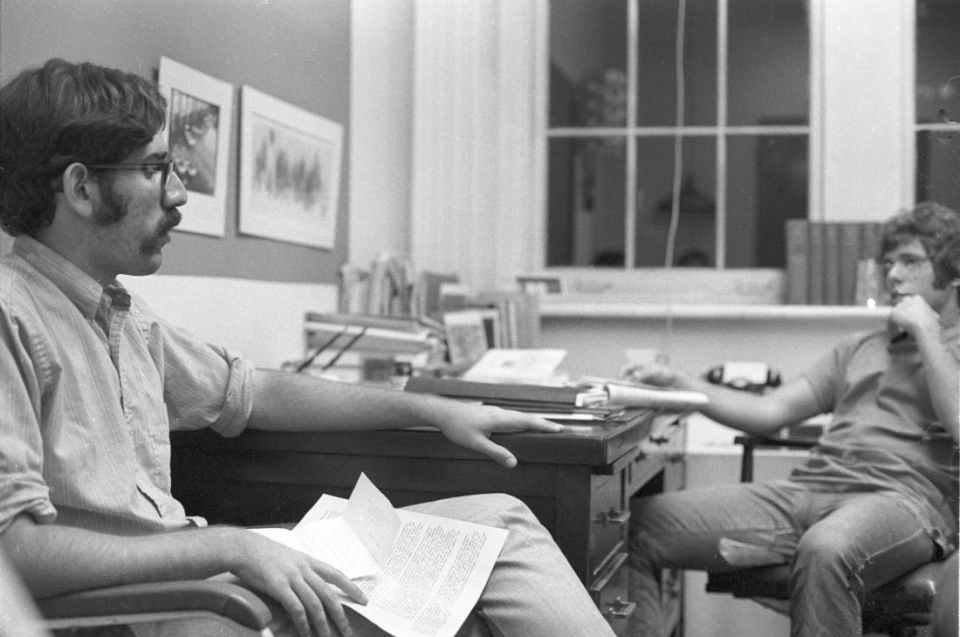When Was The Last Selective Service Draft
With contributions from Center on Conscience & War
In 1917, the Selective Service Act created a system that authorized a draft and required all men of a certain age to register through the Selective Service System. AFSC was founded that same year to give conscientious objectors an alternative to military service as they faced the realities of a draft in World War I.
AFSC opposes requiring anyone, regardless of gender, to register for the draft and to participate in systems of war. However, in July of this year, the Senate Armed Services Committee voted to expand the registration requirement—and associated penalties— to women.
This is a step backward toward militarism that hurts us all. Instead of expanding registration, the U.S. must end the Selective Service requirement for everyone.
Tell Congress: End the Selective Service requirement for everyone!
Here's what you need to know:
1. Right now, all draft-age, male U.S. residents are required to register for the Selective Service.
The Selective Service system exists to collect information about people in the United States who could be forced to join the military in the case of a draft. The system allows the Department of Defense to rapidly increase the number of troops serving in the military if there aren't enough volunteers.
Most men ages 18 to 25 who are U.S. citizens or residents are required to register under this system, which collects information like the individual's address, Social Security Number, and email.
The system also maintains a network of "draft boards." These are civilian groups who would be tasked with deciding if people get deferments or classifications like "conscientious objector" status in the case of a draft. The draft itself would be administered by military reservists, despite the Selective Service being ostensibly a civilian agency.

2. People who don't register with the Selective Service face penalties.
Not registering for the Selective Service is a felony, and those who choose not to register face many penalties. These extrajudicial sanctions include not being able to get many federal or state jobs or trainings and some state student aid (although federal student aid programs are no longer restricted). It can also cause a five-year delay for those seeking citizenship. In the worst case scenario, if someone were to be criminally convicted of not registering, they could be fined up to $250,000 and sent to jail for up to 5 years—although this has not happened since the 1980s.
3. The Selective Service system is outdated and serves as a recruitment tool.
The United States has not drafted anyone since 1973, and the Selective Service system, which costs taxpayers about $26 million a year, collects registration records that have been described as "less than useless" by Bernard Rostker, a former director of the agency.
Without an active draft, the Selective Service system has become a military recruitment tool—with recruiters often targeting Black, Brown, and low-income communities.

4. Some legislators are trying to expand the draft to women—and some are trying to end the system entirely.
In a recent defense policy bill, the House of Representatives voted to require women to register with the Selective Service. They added this provision to the National Defense Authorization Act (NDAA), a bill that passes every year to authorize defense-related activities. The Senate Armed Services Committee also included this expansion in their own version of the NDAA. However, when the House and Senate negotiated the final bill the Selective Service System expansion was stripped from the text!
The expansion was stopped for now, but ultimately we want to see an end to the system overall. Fortunately, there are also efforts in both the House and Senate to end the Selective Service system! Reps. Peter DeFazio and Rodney Davis, and Sens. Ron Wyden and Rand Paul, have introduced the Selective Service Repeal Act in each chamber (H.R. 2509 and S. 1139). This bipartisan effort would end the Selective Service System, end the sanctions against those who don't register, find new government jobs for those working for the Selective Service, and preserve the rights of conscientious objectors.
5. Expanding the Selective Service System is not progress. It's a step back toward militarism.
Proponents of expanding Selective Service registration have disguised the effort as "feminism." In reality, the draft is a burden that has been unjustly placed on men for decades—and expanding the system to women is a wrong-headed approach in working toward equality. Instead of forcing more people to participate in systems of war with threats of fines, prison, and other sanctions, Congress should end the system entirely.
Contact Congress today: Tell them to end Selective Service for everyone!
About the Author
More Posts by this Author
When Was The Last Selective Service Draft
Source: https://www.afsc.org/blogs/news-and-commentary/its-time-to-end-not-expand-selective-service-system
Posted by: christiankeent1945.blogspot.com

0 Response to "When Was The Last Selective Service Draft"
Post a Comment